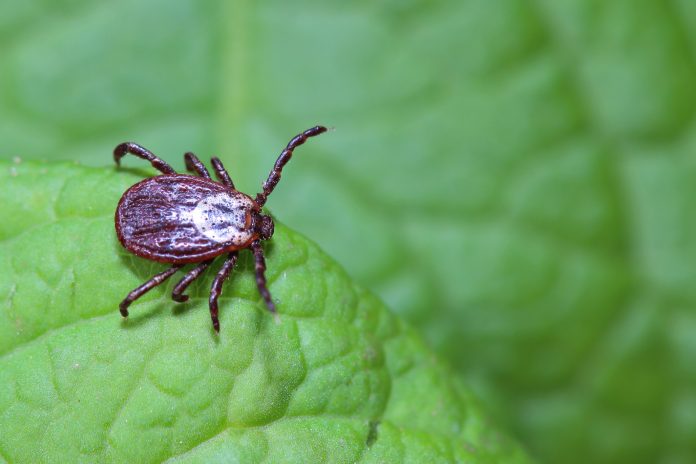A new study reveals why Lyme disease is more common in northern climates than it is in the South. According to the new U.S. Geological Study report, heat and humidity cause Lyme disease-bearing ticks to hide out, explaining why the disease is less common in southern climates.
Researchers found that Lyme disease-transmitting ticks die of dehydration when exposed to a combination of high temperatures and lowered humidity. In an earlier related study, the researchers found that southern black-legged ticks, unlike northern ones, usually stay hidden under a layer of leaves, where they are less likely to encounter people.
“In the North, when you walk through the woods you’re walking right through tick habitat,” said Howard Ginsberg, leader of the USGS Patuxent Wildlife Research Center’s field station in Kingston, Rhode Island. “In the South, you’re walking on top of the habitat. We think that is a crucial difference.”
To find out what role regional temperature and humidity conditions play in tick survival, researchers exposed immature black-legged ticks to a simulated northern climate with temperatures between 72 and 74 degrees Fahrenheit, and a southern climate of 90 to 92 degrees Fahrenheit. Humidities were set to 75, 85 or 95 per cent. To rule out the effects of genetic differences between northern and southern populations, the researchers tested ticks from Rhode Island and lab-raised hybrids, with one parent from Wisconsin and the other from South Carolina.
The researchers found the combination of high temperature and lower humidity was lethal to the hybrid ticks. At high humidity, about four-fifths of the hybrid ticks were able to survive temperatures in the 90s for four days or more. But at the mid-range humidities, less than a third of the ticks survived the high temperatures for that long. The effects of humidity were also clear in the Rhode Island ticks, which typically died within two to four days at the lowest humidity, but lived for a month or more at high humidity regardless of how hot it was.
If the climate gets warmer and drier in border zones like the Mid Atlantic, Lyme disease may eventually become less common there, says Ginsberg. “For example, in the Chesapeake Bay region, we might see natural selection pressure on northern ticks to behave more like southern ticks and stay under cover, so we could get less Lyme disease.”
As such, it is especially important to educate your clients in cooler, more humid climates about Lyme disease. Help them to understand the risks associated with tick bites can help to reduce their likelihood of becoming infected.









